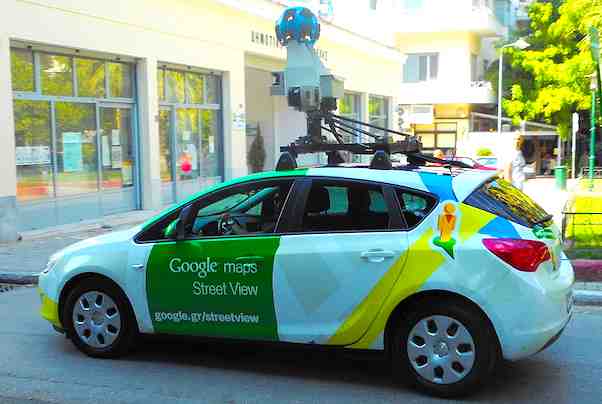
Google’s (Alphabet’s) success depicts the effectiveness of its organizational structure and organizational culture in supporting excellence in innovation. A company’s organizational or corporate structure is the arrangement of organizational components and resources based on its organizational design. Google’s organizational structure is not conventional because of its emphasis on flatness. On the other hand, a company’s organizational or corporate culture is the set of beliefs, values, behavioral tendencies, and expectations among employees. Google’s organizational culture emphasizes change and direct social links within the firm, in support of the organizational structure’s flatness. Theoretically, such an alignment between the technology company’s corporate structure and corporate culture contributes to higher chances of success. This success manifests in Google’s profitability and stability. The company remains a major influence in the global information technology, consumer electronics, and Internet services market. Google’s dominant position is attributable to the synergistic benefits of its organizational structure and organizational culture in supporting industry leadership.
Google’s organizational structure and company culture align to maximize innovation. Innovation contributes to the brand image, which is an essential strength identified in the SWOT analysis of Google (Alphabet). The alignment between the work culture and corporate structure helps develop the company’s competitive advantages to address strategic challenges linked to multinational competitors, like the consumer electronics and online services of Apple, Amazon, Microsoft, Sony, and Samsung; the Internet advertising services of Facebook, eBay, and other companies; the movie streaming services of Netflix and Disney; and the Internet connectivity services of Verizon. Google is an example of aligning and effectively using corporate structure and corporate culture to achieve strategic objectives in developing competencies for business growth. This structure-culture alignment promotes human resource competencies that are essential to business development toward the fulfillment of the mission and vision of Google (Alphabet).
Google’s Structure
Main article: Google’s (Alphabet’s) Organizational Structure
Google has a cross-functional organizational structure, which is technically a matrix company structure with a considerable degree of flatness. This flatness is a defining structural feature that supports the growth and competitiveness of Alphabet’s technology business. The main characteristics of Google’s corporate structure are as follows:
- Function-based definition
- Product-based definition
- Flatness
Google’s corporate structure uses business functions as a basis for grouping employees. For example, the company has a Marketing group. The business also uses product type as a basis for grouping employees, i.e., human resource groups for developing Pixel devices. In addition, Google’s business structure has considerable flatness. The flat organizational structure means that Alphabet limits the degree of hierarchy in its organizational design and facilitates productive vertical communications that connect managers with employees, teams, or groups. Because of the flatness of the corporate structure, Google’s employees can efficiently meet and share information among teams.
Google’s Culture
Main article: Google’s (Alphabet’s) Organizational Culture
Google’s organizational culture is not typical among large businesses, partly because of the effects of the company’s organizational structure. The corporate structure interacts with the company culture to influence the organizational capabilities and human resource characteristics of Alphabet’s technology business. Google’s corporate culture has the following primary characteristics:
- Open
- Innovative
- Smart, with emphasis on excellence
- Hands-on
- Supports small-company-family rapport
Openness involves sharing information to improve Google’s business processes. This cultural characteristic is achieved through the matrix organizational structure. With this corporate structure and in the context of Google’s organizational culture, employees feel free to share their ideas and opinions, such as in communications during meetings with managers. Also, innovation is at the heart of the technology business. Every employee is encouraged to contribute innovative ideas, which are essential to supporting Google’s (Alphabet’s) generic strategy for competitive advantage and strategies for intensive growth. In addition, this corporate culture pushes for smartness, with the aim of motivating workers to strive for excellence, such as in developing new designs for consumer electronics and online services. In relation, Google supports employees’ hands-on involvement in projects and experiments, which are implemented for testing new ideas.
Google’s organizational culture creates a warm social ambiance. Warmth is a factor that facilitates information sharing and employee satisfaction in working for the multinational technology business. The organizational culture maintains a small-company-family ambiance, where people can easily share ideas with each other, including Google and Alphabet executives like Larry Page. Thus, Google’s business culture supports excellence in innovation through the sharing of ideas and the capability to effectively respond to the global market for information technology, cloud computing and Internet services, digital content distribution, and consumer electronics.
References
- Alphabet Inc. – Form 10-K.
- AlSaied, M. K., & Alkhoraif, A. A. (2024). The role of organizational learning and innovative organizational culture for ambidextrous innovation. The Learning Organization, 31(2), 205-226.
- Google Careers – Teams.
- Google Products.
- U.S. Department of Commerce – International Trade Administration – Software and Information Technology Industry.
- Wyland, R., Hanson-Rasmussen, N., & Clark, F. (2024). The structure-culture alignment activity: Aligning organizational structure elements with diversity, equity, and inclusion cultural values. Journal of Management Education, 48(1), 141-167.